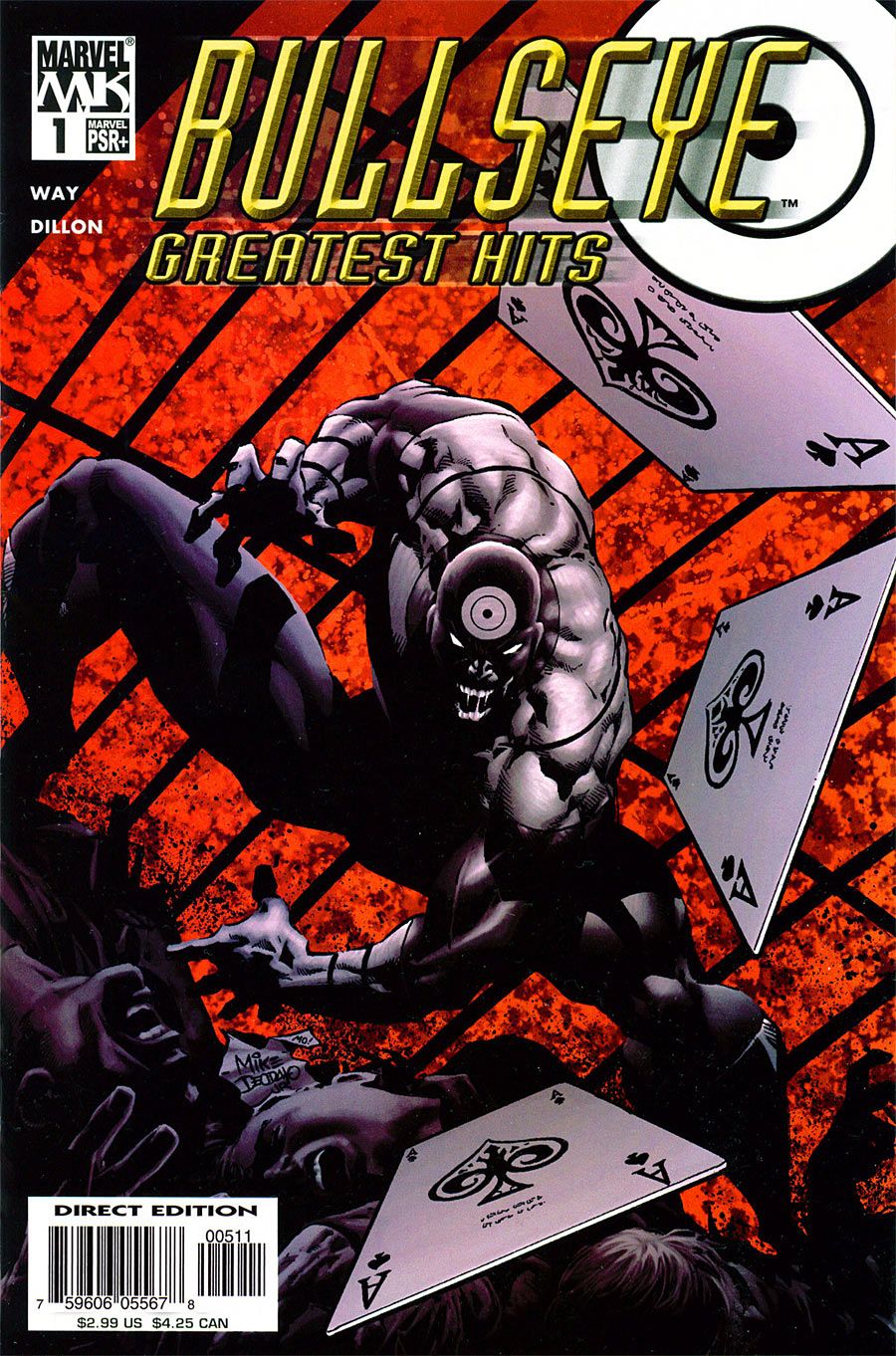Tastes Like How Purple Smells, Concluded
Yeah, so... sorry about dropping out like that. Good news is that the reason why I had to drop the column from my workload for a bit is because I had to spend that time doing exactly the kinda things that make for great exploration in this very column. I don't mean to be cryptic; I've been busy as hell putting together several creator-owned deals. In all cases, I'm the writer and co-creator... but, because of several factors (most of which are pretty common in comics) I also have to act as, basically, a producer -- I'm the one who has to hustle up the money to put these things together. None of which, by the way, ends up in my pocket.
But that's for a later column. This one's about my writing process; specifically, how I come up with the "guts" of a story. First part's here.
Once the basic (plot, beginning & end, themes) outline is done, it's finally time to start "writing"... y'know, the romantic kind of writing where I sit in front of my laptop with a contemplative expression and a cup of coffee and I "let it flow." Unfortunately, a good chunk of that "flow" ends up getting thrown right the fuck out the window.
Why? Because even though I know where I'm coming from and where I'm heading, I haven't yet spent enough time with the characters to figure out how, exactly, they're going to "act." I realize how goofy it sounds, but just because you create a character and you're in control of their actions doesn't mean that you get to dictate how, exactly, they're going to perform those actions. In my case, I have to wait until they show me.
Here's an example, using classic characters: A gorgeous woman walks into a private eye's office. Outline dictates that the P.I. is supposed to hear the woman's story, decide that it's a bunch of lies and then refuse to take her case/money. She leaves, insulted... but the P.I., as is his nature, then begins to dig into her past and present, searching for an answer as to why she came to him in the first place.
So I start writing. She walks in. Who speaks first? Flip a coin. Both characters, because of the setting, can reasonably assume that they know what the other wants/expects. So the first thing one of them says to the other maybe has nothing to do with private investigation or the "case." Maybe the P.I. says something about his secretary and how she hasn't shown up for the last few days -- he has no idea where she is. The woman comments on that, says something about him being a shitty P.I. Maybe the detective grins at this, maybe he pours a drink. Maybe he doesn't offer her one. The woman then wonders aloud if maybe he's the kind of P.I. who only gets to work when he's getting paid. Hmm... that's a cool way to have her feel out this guy, see where his morals are. Maybe that's what makes his antennae pop up. He reacts negatively to the comment, turns cold. The chit-chat portion obviously over, the woman makes her pitch. He stays icy, thinking less about what she's saying than he is about why she's saying it. It's obvious that he isn't taking the case. Maybe the woman doesn't even finish her pitch. Maybe she stands up and says that she's cracked the case of the missing secretary -- she skipped out on him because he's a fucking asshole.
I could go on and on and on. And I usually do.
Sucky as it is -- and oh, does it suck -- sometimes I just have to let a scene spool out, regardless of how long it takes to reach either its conclusion or a suitable point of transition (to the next scene). And then... well, that's when it's time to grab the machete and go back over the scene, chopping out everything that didn't pay into propelling the story toward the desired point. It's often a pretty goddamn grim experience, especially if I'm on a tight deadline and I can't afford to let something lie long enough to fall out of love with it.
All of that being said, it sometimes happens that, by going through the prolonged process described above, I end up coming up with some new little twist or wrinkle that digs the story juuust a little deeper into the reader's skin without, of course, derailing or occluding any of the other elements of the story. It's rare but, when it happens, it's pretty goddamn great -- makes me feel like I know what I'm doing. An example of this is a single flashback panel inserted into a scene in the first issue of "Bullseye: Greatest Hits" #1; a quick shot of a some pigeons, clueless and eminently susceptible, during an exchange between Bullseye and two NSA agents. That just kinda happened.
Which leads me to an admission that probably completely invalidates everything I've previously said about my creative process: Apart from the first issue of my "Deadpool" run, I outlined/planned/plotted almost nothing at all -- it was all done on the fly. Well, not all of it... I did have a very broad "direction" in mind, in regard to the character's story arc. As in, "world's greatest merc," "world's greatest hero," "Deadpool fights as if his life depends on it (because now it actually does)," etc. It was risky, yes -- and I don't recommend that anyone should use this particular method -- but I'll always feel justified in doing it that way because it genuinely felt like the best, and most characteristically accurate, way to do it. Opinions vary, but overall it seems to have worked out swimmingly.
Anyway, that's how I do it.


